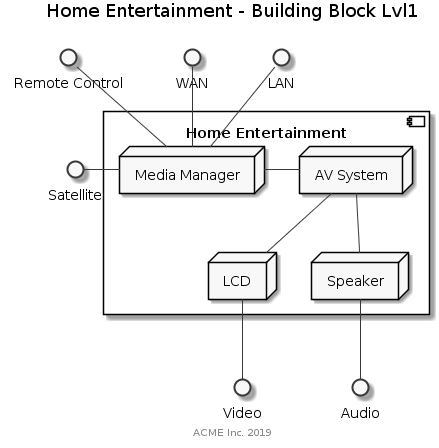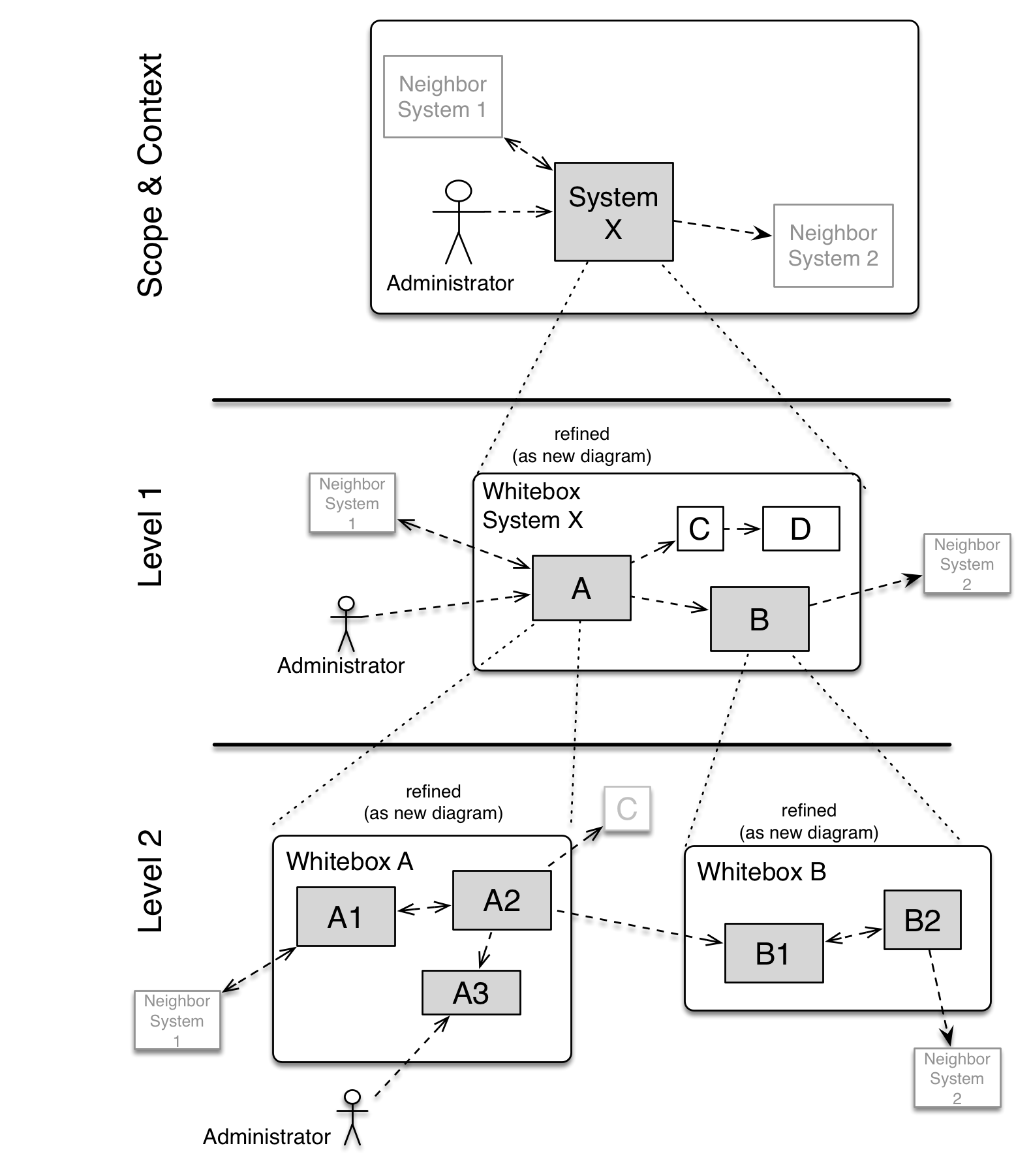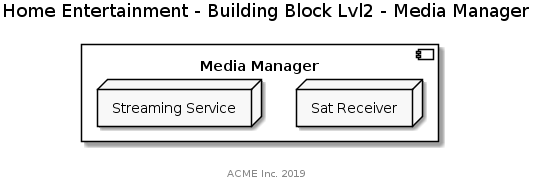Building Block View
Whitebox Overall System
<Overview Diagram>

- Motivation
-
The system is split up based on its physical domain and interfaces on the first level.
- Contained Building Blocks
| Block | Description |
|---|---|
Media Manager * |
Manage active media content by taking commands via WAN or the remote control |
LCD |
Display video signal |
Speaker |
Play audio signal |
AV component |
Convert a raw media stream to separate audio and video signals |
* Due to a central role in the system the media manager is detailed in a separate sub chapter.
Media Manager
<Purpose/Responsibility>
The task of the media manager is to play the content that the user is requesting. It needs to interpret input requests and transfer the appropriate media stream to the AV component.
<Interface(s)>
| Interface | Description | I/O |
|---|---|---|
LAN |
Online streaming content is controlled via LAN |
in:media control |
WAN |
An internet connection is used by the system to update its firmware via the Manufacturer or to fetch online content |
out:HTTPS |
Remote Control |
A remote control is used by the Owner to modify the system state |
in:physical interaction |
Satellite |
Using the |
in:DVB-S |
Media Stream |
A raw media stream is sent to the AV component for further processing |
out:raw stream |
<Quality/Performance Characteristics>

